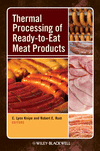Products: Reduce Fat, Maintain Function -- January 2008

Shortening is critical in baking. It provides structure, mouthfeel and all the associated flavor characteristics and sensory attributes. A baking fat needs to provide structure in the form of solids to achieve the desired end results. Whether formulating a puff pastry, sheet cake or pie crust, the fat is the primary contributor to appearance and sensory attributes. Solids come from two forms—trans and saturates. Unfortunately, there are trade-offs. When eliminating trans fats, the saturated fats are typically increased. If the solids are decreased too much, the shelflife will likely be decreased. If high-stability oils are used (such as high-oleic or mid-oleic oils), costs may rise.
Today, the challenge faced by food scientists is how to reduce saturates, keep trans fats at zero and maintain functionality. One formulation method is to use margarine in place of a shortening. Another way to lower saturates, besides replacing the shortening with margarine, is to use alternative oils or blends of oils. An example might be the use of canola oil or sunflower oil, possibly combined with specially-blended palm oil fractions. Blending a salad oil with a percentage of fully-hydrogenated oil (5 iodine value, fully saturated and trans-free) can also yield some functionality (see chart “Trans Fatty Acid Content”). However, while saturates are lower (22-24%) than a typical all-purpose shortening (30-33%), the downside is decreased functionality that increases the melt point. This, in turn, imparts a “waxy” mouthfeel.
One other option includes a combination of formulation and specialized processing to achieve a fluid shortening. This product actually exhibits a semi-viscous characteristic and has high solids at 50°F (23–25%) and saturates of about 30%.
In addition to oil blending, there is long-term research that is showing promise. This includes the use of new hybrid oils that will be naturally lower in saturates. These hybrid oils are actively being developed by agribusiness seed companies.
There is no easy fix, or “drop-in replacement,” to take the place of the functionality of a typical partially hydrogenated bakery shortening. To get the best shortening replacement, manufacturers should form a partnership with a supplier to find a custom-based solution, but keep in mind—there will most likely be a cost impact. The oils used as alternatives are more expensive than regular partially hydrogenated soybean oil; the supply is in great demand, and the processing to make the shortening or margarine is more complex.
The good news, though, is that it is possible. Ventura Foods recently developed a line of shortenings that possess many of the characteristics of a traditional trans-containing shortening without the trans fat. They help maintain proper dough rheology during mixing, are mild in flavor and can easily fit into many manufacturing systems without adding extra equipment or processing steps.
For more information:
Ventura Foods LLC, Brea, Calif.
Joe Higgs, 800-326-2253
jhiggs@venturafoods.com
www.venturafoods.com
Looking for a reprint of this article?
From high-res PDFs to custom plaques, order your copy today!




